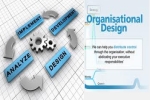There’s a saying that lovers had a seven-year itch. It’s not just lovers who feel that the seven year mark is the one at which realisation dawns that momentum is lost, the sparkle is tarnished, that things have changed (and rarely for the better). Barack Obama has been at the forefront of American politics since 2007. From an astonishing and historical trip to The White House, this week we read that even his supporters have now fallen out of love with him.

The philosopher and teacher Rudolf Steiner developed a theory of human activity based on seven-year cycles associated with astrology. His theory propounded the conclusion that humans experience physical and mental change every seven years. I can remember being told I would probably ‘grow out’ of my asthma when I was seven, 14 or 21 (I did!). This was based on the theory that every seven years we regenerate every cell in the body.
Life is reflected in business. Many organisations experience a seven year itch where they feel they have lost their fizz in the same timeframe and change their structures in response. Think of the placing of local government power over the years. First it was devolved, then centralized, and then back again. Currently we are in the grip of localism, but in the way of all things we know it will change again in due course. Probably in seven years ......
Business changes are often prompted by events such as falling profits or the arrival of a new CEO. The classical models tend to be ‘centralised corporate’ as against ‘decentralised divisions’. Interestingly, you can predict the structure by examining the financial health of a large business. Companies in difficulty cut costs and centralise functions at Head Offices. Decision making is limited to a very few, and the paper clips are regularly counted! Contrast that with the freer model of operating divisions with their own HQ staff who are trusted to ‘ ... boldly go where few have gone before’!
The decentralised approach claims to be close to the customer. As a smaller entity decisions can be made faster and the organisation is more agile, more dynamic, swiftly re-aligning to meet fresh challenges. But there is greater cost and duplication, so when times are harder, the incoming CEO can gain rapid cost savings by eradicating expensive divisional HQs, and eliminate duplication – particularly in staff functions such as finance, HR and IT. Critics of the corporate model accept the valid cost reduction points but challenge the creation of a monolith that cannot react speedily to market dynamics. It’s rather like the supertanker that cannot turn for miles and hits the rocks.
Perhaps there is a way to blend both models using shared services to deliver support to sales and marketing groups with authority to interact with the customer in a flexible and nimble way. In the 1990s Dave Uhlrich, a prominent management thinker in the USA, advocated a new model for HR. This used ‘sharing service centres’ to do transactional work, ‘business partners’ to deliver strategic HR at divisional/operating company level, and ‘centres of excellence’ providing specialised direction on pay, benefits, learning development, and senior recruitment. Many organisations adopted the structure and although (inevitably) there are critics of the system, it seems to have largely stood the test of time. It is certainly a model that could apply to other staff functions with a blend of strategic, transactional and expert offerings.
Organisations do have to manage costs so there is always a need to control overhead and back-office costs. In the public sector councils are sharing services but keeping control of front-line activities. Smaller police forces share forensic and major crime teams. Whatever shape or form the ‘customer’ comes in, organisations need to be close to them to drive innovation to meet their needs. Agility must be the key when it really matters.
Like everything else, life has sped up; organisational change comes around much quicker. We may not be at the seven-month change yet, but some companies do have to be able to transform very speedily to address sudden market changes. Fresh thinking and focused activity and monitoring all help you survive and thrive. Make sure your HR activities and policies support and expedite your organisational plans for change, otherwise they will founder.
If you have an HR itch that needs to be scratched, get in touch!
Russell HR Consulting provides expert knowledge in HR solutions, employment law training and HR tools and resources to businesses across the UK.
Subscribe to our free monthly HR newsletter. Russell HR Consulting employment law newsletters are emailed automatically to our ever-growing number of subscribers every month.
Latest blog posts
- Is There a Santa Clause?
06 / 12 / 2023
- Lend Us a Hand!
22 / 11 / 2023
- What Happens When There is a Clash in Protected Characteristics?
17 / 10 / 2023
- Encouraging a Healthy Workforce 2
21 / 09 / 2023
- Encouraging a Healthy Workforce
23 / 08 / 2023
- What a Disaster - (But We Have a Cunning Plan!)
20 / 07 / 2023
- It’s Time We Stiffened the Sinews
14 / 06 / 2023
- Why Is It So Important to Develop Emotional Resilience?
16 / 05 / 2023
- When is a discretionary bonus not discretionary?
20 / 04 / 2023
- Recovering Training Costs 15 / 03 / 2023
